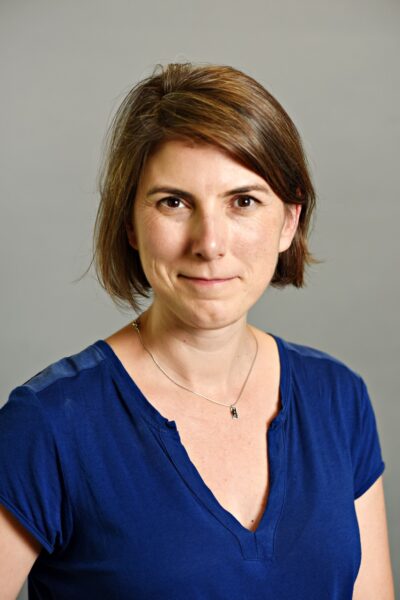Alison K. Smith is a professor and department chair at the University of Toronto. She lives in Toronto, Ontario, and has been a member since 1999.
Websites: https://russianhistoryblog.org

Twitter: @profaks
Alma maters: BA (Russian civilization), University of Chicago, 1993; MA (history), University of Chicago, 1995; PhD (history), University of Chicago, 2000
Fields of Interest: Russia, social, cultural, food
Describe your career path. What led you to where you are today?
I did not intend to end up a professor—I thought I would be an economics major and then go to law school—but I found myself gravitating toward anything and everything to do with Russia. I started with Russian language, then literature, then history, and that is where I settled in. I did not understand what I was getting into when I started grad school. I had no clue about the ways that pursuing a history PhD disrupts one’s life, from packing up for a year and traveling to archives to the job market. Fortunately I turned out to love the archives, and I had lucky timing on the job market, and made it onto the tenure track and through the ranks.
What do you like the most about where you live and work?
I am at a major research university in a vibrant city in a sensible country! I am unbelievably fortunate.
What projects are you currently working on?
I have been digging into the extensive archives of one particular Russian imperial palace, which also includes records from its neighboring town (Gatchina) and villages. I plan to write two books out of these materials: one will be a collection of deep dives into individual cases or events from the archives (I have been thinking of it as a sort of collective microhistory) and one will be an exploration of the idea of autocracy and what it meant to those who lived literally next door to the autocrat.
Have your interests evolved since graduation? If so, how?
I am still very much a historian of the era of the Russian Empire, but my research has changed a lot, from a first project on food, to a second one on social estate, to this third one on Gatchina. They seem like abrupt shifts, but I can trace out what led me from one to the other a bit more organically. But I have also been affected by conversations with amazing colleagues and from paying attention to the world around me, even if my topics are located in a different time and place. For example, one thing that is linked all my projects is thinking about serfdom, and my thinking on that has benefited hugely from conversations with colleagues who study new world slavery and from thinking of the role of race both in the construction of serfdom and in the ways that historians have treated it.
What’s the most fascinating thing you’ve ever found at the archives or while doing research?
When I saw a file about “The Dead Cheese Master” in the Gatchina archives, of course I had to order it! It involves the semi-mysterious death of a Swiss man hired to start a cheese factory on the Gatchina estate in the 1790s. In some ways there’s not that much to the file, but I have been enjoying trying to tease out more from its scant information, even traveling to Switzerland to see what I could find there—it’s what inspired the idea of writing a book that delves into individual archival files.
What do you value most about the history discipline?
On a personal work level, I adore the archives. For the most part Russian archives do not allow you to photograph at will, so my trips involve hours sitting in reading rooms poring over documents, and I love everything about it. And I have really come to love them as I have come to understand them better, and to understand the kinds of things they can tell us—not just facts, but larger stories about the structure of society or of bureaucracy (and the way the former affects the latter). More generally, I appreciate the ways that historical research can pull us out of easy understandings of the past—I am at times challenged by that disruption, but I also value it enormously.
Do you have a favorite AHA annual meeting anecdote you would like to share?
Honestly most of my AHA annual meeting experiences have revolved around the job market, so a lot of my memories are pretty stressful. But I had started knitting toward the end of my time in grad school, and when I was waiting for my big hall interviews I pulled out some knitting to keep my hands occupied and my nerves down. Someone came up to me and thanked me for knitting because watching me had calmed her down, too!
AHA members are involved in all fields of history, with wide-ranging specializations, interests, and areas of employment. To recognize our talented and eclectic membership, Perspectives Daily features a regular AHA Member Spotlight series.
This work is licensed under a Creative Commons Attribution-NonCommercial-NoDerivatives 4.0 International License. Attribution must provide author name, article title, Perspectives on History, date of publication, and a link to this page. This license applies only to the article, not to text or images used here by permission.



